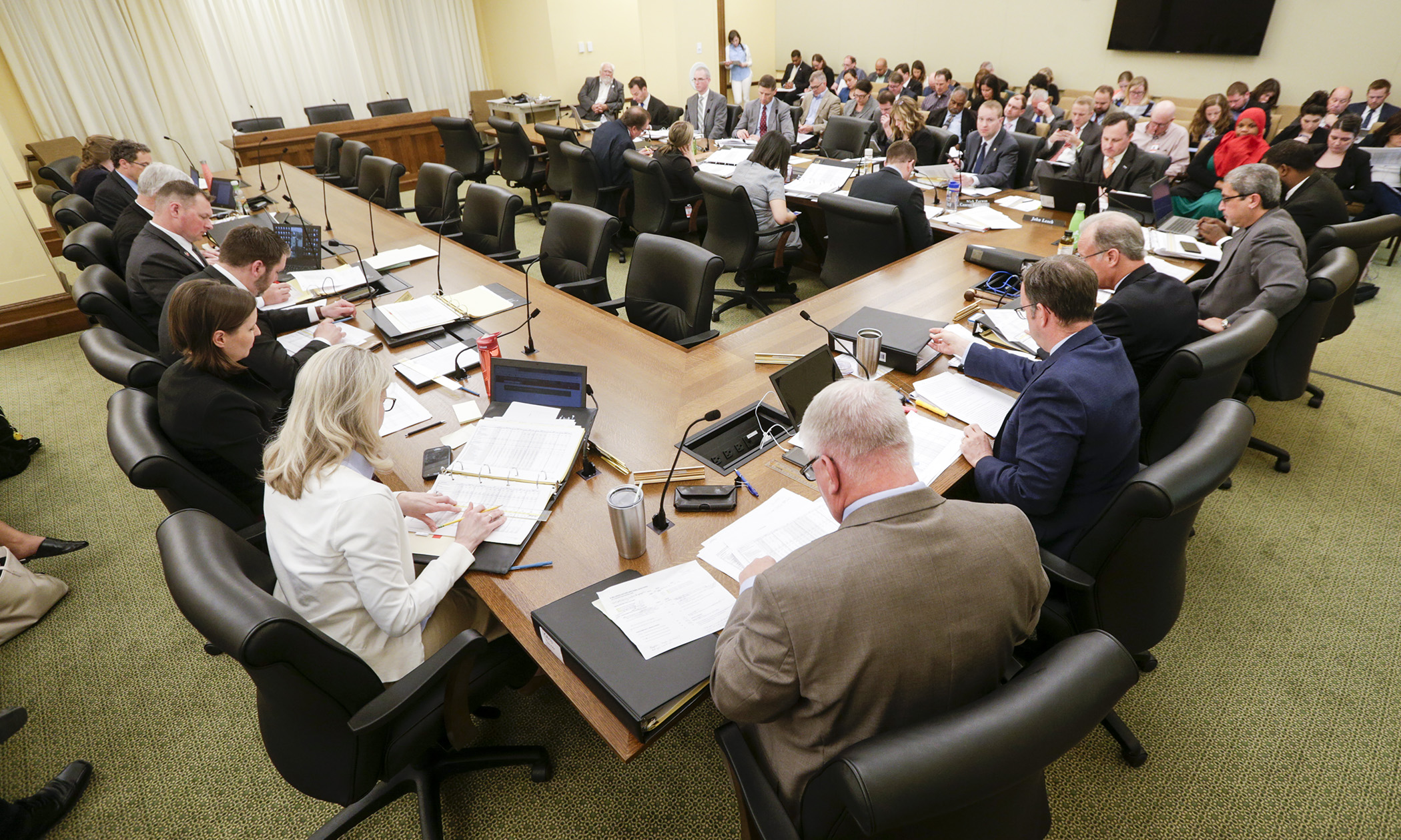Money and policy differences abound in public safety omnibus bills

There will be money and policy to scuffle over in the omnibus judiciary and public safety conference committee, and finding agreement on both will be difficult because the House and Senate positions are starting very far apart.
But the policy debate will have to wait, because Monday’s conference committee on HF2792/SF802* focused on the money part and the significant differences in the House and Senate proposals to fund corrections, public safety programs and courts across the state.
The House proposes to appropriate $2.59 billion for the 2020-21 biennium – a $232 million, or 9.9 percent, increase over the base budget -- and the Senate has proposed $2.38 billion – a $25.3 million, or 1.1 percent, increase over base.
[MORE – View a spreadsheet comparing the proposals]
Optimism at the start
Sen. Warren Limmer (R-Maple Grove), who sponsors SF802, expressed optimism that not only would the conference committee finish its work before a May 13 deadline, but that the end product would be a good one.
“Sometimes our best work is done by divided government,” Limmer said. “I’m hoping that’s the outcome this year.”
Rep. Carlos Mariani (DFL-St. Paul), the sponsor of HF2792, hinted at the difficult negotiations that lie ahead, but also expressed optimism about the end result.
“We clearly have two different bills,” Mariani said. “What we do have in common is that we care very deeply about funding public safety, corrections and courts.”
Walk-through focuses on funding differences
Areas where the two sides are far apart in funding for the 2020-21 biennium include:
- salary increases for judges: the House gives 3 or 4 percent raises, the Senate none;
- salary increases for public defenders: the House provides $11.93 million, the Senate none;
- hiring 50 new public defenders and 58 support staff: the House would appropriate $12.77 million, the Senate none;
- hiring 48 new Guardian ad Litem child advocates: the House provides $8.65 million, the Senate none; and
- Human Rights Department: House $13.12 million (a 46 percent increase from base) and Senate $8.64 million (a 6 percent cut).
The House funding increase for the Department of Human Rights would allow it to hire 17 additional full-time employees, 13 of whom would staff new regional offices in Bemidji, Duluth, Rochester and Worthington.
Potentially the highest profile policy difference is the inclusion of two gun-control provisions that Rep. Matt Grossell (R-Clearbrook) said “badly poisoned” the bill when he spoke against it on the House Floor last Tuesday.
One provision would require a buyer background check for transfer of a pistol or semiautomatic military-style assault weapon, including those among private parties. Some exceptions would be provided for, such as a transfer involving a firearms dealer or law enforcement agency, an exchange between immediate family members or a temporary transfer if it “is necessary to prevent imminent death or great bodily harm.”
The other would permit law enforcement and city or county attorneys to petition a court for an extreme risk protection order to prohibit someone from possessing a firearm for between six months and two years if they pose a “significant danger” to themselves or others by possessing a firearm.
Senate Majority Leader Paul Gazelka (R-Nisswa) has indicated no appetite for the gun-control provisions among his caucus members.
Related Articles
Search Session Daily
Advanced Search OptionsPriority Dailies
Ways and Means Committee OKs proposed $512 million supplemental budget on party-line vote
By Mike Cook Meeting more needs or fiscal irresponsibility is one way to sum up the differences among the two parties on a supplemental spending package a year after a $72 billion state budg...
Meeting more needs or fiscal irresponsibility is one way to sum up the differences among the two parties on a supplemental spending package a year after a $72 billion state budg...
Minnesota’s projected budget surplus balloons to $3.7 billion, but fiscal pressure still looms
By Rob Hubbard Just as Minnesota has experienced a warmer winter than usual, so has the state’s budget outlook warmed over the past few months.
On Thursday, Minnesota Management and Budget...
Just as Minnesota has experienced a warmer winter than usual, so has the state’s budget outlook warmed over the past few months.
On Thursday, Minnesota Management and Budget...